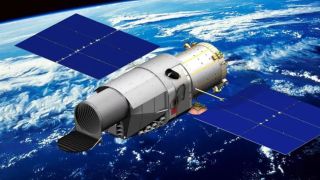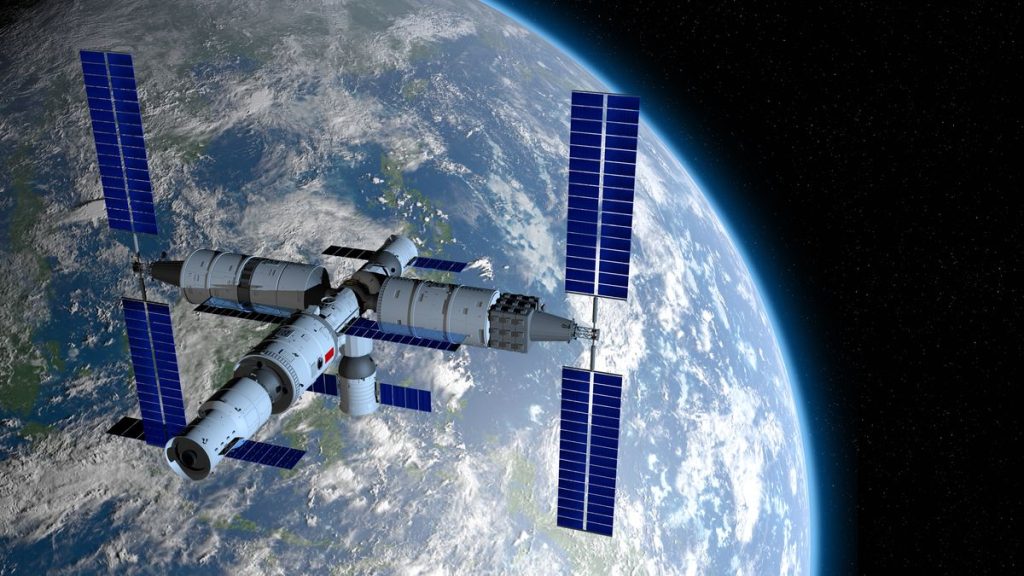China has been operating its completed Tiangong orbital outpost for almost two years now — and is looking to expand its capabilities with new modules and spacecraft.
The three-module, T-shaped Tiangong space station was fully assembled in November 2022, with the arrival of the Mengtian science module. The station seems set to grow again, however.
“In the future, we will try to upgrade our facilities,” said Li Ming, chairman of the science and technology committee of the China Academy of Space Technology (CAST), speaking during a plenary session on human spaceflight at the International Astronautical Congress in Milan, Italy, on Oct. 17. CAST designed and manufactured the modules for Tiangong.
The upgrades to Tiangong will come in a number of steps, according to Li. The first would be to update the Chinese space station’s Tianhe core module to be able to accept further modules.
Related: China’s space station, Tiangong: A complete guide
“With this purpose, we try to upgrade the space station from the T shape. Presently it is the T shape, to the future cross shape, or you may also call it the Double-T shape,” Li said. He added that this would allow China to send more space science experiment racks and large extravehicular experiments, and overall extend the scale of operations aboard Tiangong.
“Another upgrade is developing the renewable spaceship,” said Li. The versatile spacecraft, named Mengzhou, will come in two variants: one for sending crew to the moon and another for Tiangong.
“With this spaceship, we can support three astronauts for the lunar missions and also the seven astronauts for the new space station missions,” said Li.
China conducted a boilerplate test flight of the spacecraft — that is, a flight without life support and other systems — in 2020. Its full debut flight is expected around 2027, and it will fly on a low Earth orbit (LEO) variant of the in-development Long March 10 rocket. The new spacecraft will also be partially reusable.
The Long March 10, like the spacecraft, will have two variants: one for LEO and one for the moon. Both the Long March 10 and the new spacecraft are integral parts of China’s plan to put astronauts on the moon by 2030.
China currently sends its astronauts to LEO in its Shenzhou spacecraft, which is similar to, but larger than, Russia’s Soyuz spacecraft. The next Shenzhou mission to Tiangong is scheduled to launch on Oct. 30.

The final upgrade will be a huge addition to global astronomy efforts.
“The last one [upgrade] is a CSST, Chinese Space Station Telescope, which has really large optical cameras, featuring both a large field of view and high image qualities,” Li said. “It is also open for international communities, especially on data analysis.”
Also named Xuntian, the CSST is a Hubble-class space telescope that will share an orbit with Tiangong. It will be able to dock with the space station for maintenance, repairs and even upgrades.
The bus-sized Xuntian will feature a 2-meter (6.6 feet) diameter primary mirror, slightly smaller than that of Hubble. Its field of view will, however, be around 300 times larger, meaning it will be able to conduct broad surveys. Xuntian will scan and map around 40% of the heavens during its planned 10-year lifetime using its 2.5-billion-pixel camera.
Li said that China aims to expand international cooperation related to Tiangong, both in terms of science experiments and also crewmembers.
“Now we are ready to welcome international astronauts to join the Chinese space station program, based on the principle of mutual respect, mutual benefit, inclusiveness and equality,” Li said.
China aims to keep Tiangong — which is around 20% as massive as the International Space Station — occupied and operational for at least 10 years. Tiangong could thus be the only space station in orbit, once the ISS reaches the end of its long life in 2030 or thereabouts.

